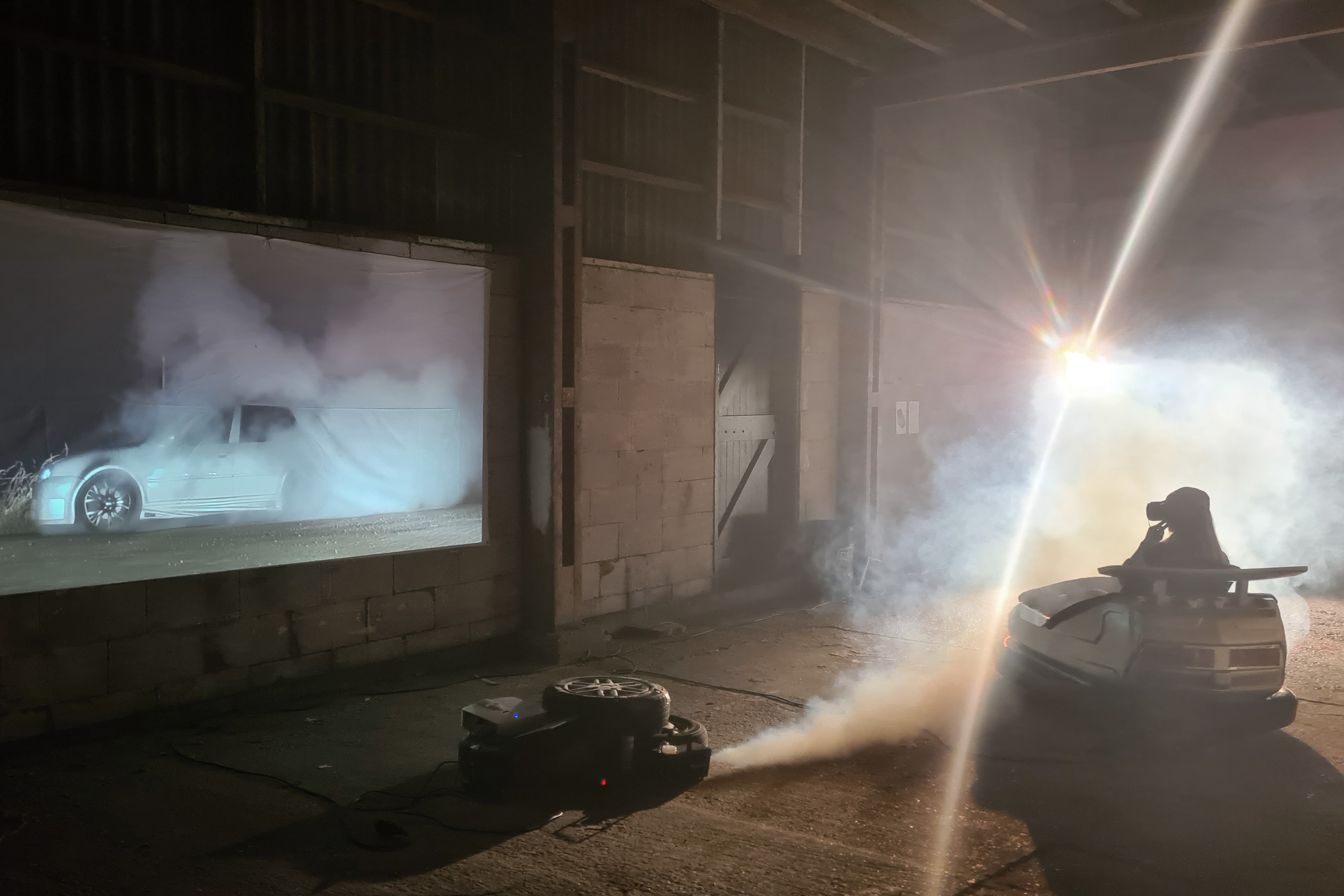Dani Ploeger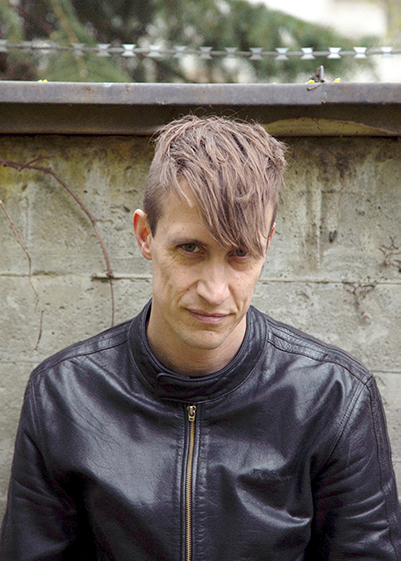
Photo: Anna Orlowska
Dani Ploeger is an artist and cultural critic who explores situations of conflict and crisis on the fringes of the world of high-tech consumerism. His work spans a broad range of forms, from media art, installations and film to performance art, anarchist engineering and cultural theory. It is often informed by field research on the use of everyday technologies under extraordinary circumstances. He has made a VR installation while accompanying frontline troops in the Russo-Ukrainian war, travelled to dump sites in Nigeria to collect electronic waste originating from Europe and stolen razor wire from the so-called ‘hi-tech fence’ on the EU outer border in Hungary. He is currently working on the development of anarchist technologies for the Rojava Revolution in North-East Syria.
Dani’s artwork has been exhibited worldwide, for example at ZKM Karlsruhe, Venice Architecture Biennale, London Film Festival and the Nairobi National Museum. His book Deserted Devices and Wasted Fences: Everyday technologies in extreme circumstances was published with Triarchy Press in 2021.
Dani is Professor of Performance and Technology at the University of Music and Performing Arts Munich. He is also a Research Fellow at The Royal Central School of Speech and Drama, University of London, Fellow at V2_Lab for the unstable media in Rotterdam and Honorary Research Fellow at the University of Rojava in North-East Syria.
HYSTERESIS by Dani Ploeger
Mixed media installation (modified bumper car, Virtual Reality app, digital video)
The term "car tuning" is used for the practice of independently modifying the technical and aesthetic characteristics of standard, mass-produced cars. Some aspects of the tuning scene seem contradictory. On the one hand, the loud-mouthed converted engines and exhausts - usually accompanied by huge audio systems - often make a crude, sometimes even violent, impression on outsiders, and news media regularly report accidents involving fast-driving tuned cars. At the same time, the optical and technical details of the cars and their presentation suggest a refined and precise creative practice, carried out in a social structure of close cooperation and solidarity.
HYSTERESIS consists of a bumper car which has been modified in collaboration with cartuners in Zeeland, a rural area in the Netherlands. The car is equipped with a Virtual Reality headset and accompanied by a video projection. After a virtual race in a Golf Mk4 over a dike road, a tuner talks about his car. Meanwhile, an endlessly repeating video recording of a burnout with an Mk4 is projected. Burnouts are performed to warm up tires for a drag race, as a spectacular public intervention, and as a memorial for fellow tuners who have crashed.
Hysteresis - "The energy lost and not returned, when tire materials are subjected to stress in any direction. Lost energy is converted to heat through molecular interaction, and since rubber has poor thermal conductivity, internal temperatures of a tire can build up rapidly under repeated flexing." (The Automotive Dictionary)
---
LINE OF CONTACT by Dani Ploeger
Click to view video documentation and interview
A group of soldiers appear to be waiting endlessly on a frontline position in Eastern Ukraine. When you close your eyes, a violent soundscape emerges.
By the spring of 2017, the Russo-Ukrainian war had evolved into a largely static conflict with long phases of limited combat activity. At this time, when most international media channels had lost interest in the conflict, Dani Ploeger travelled to Mariupol to accompany a group of soldiers during their daily activities on the frontline. He documented the seemingly endless waiting that often occurred at their positions.
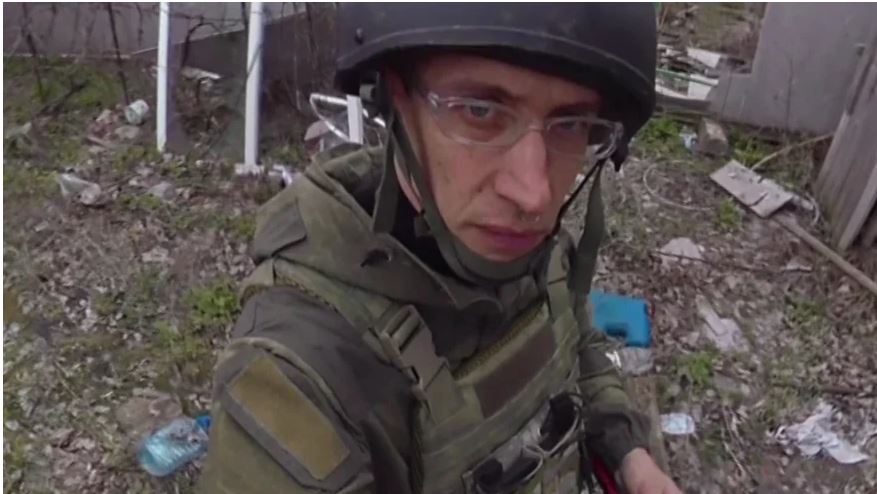
This waiting did not constitute a state of boredom though. Rather, it felt like a lasting situation of solidified dread, a slow tension that expressed an awareness that violence could erupt any time, the imagination of combat always present inside one’s head. Indeed, five years later, this tension has been succeeded by the full scale violent cataclysm of the Russian invasion.
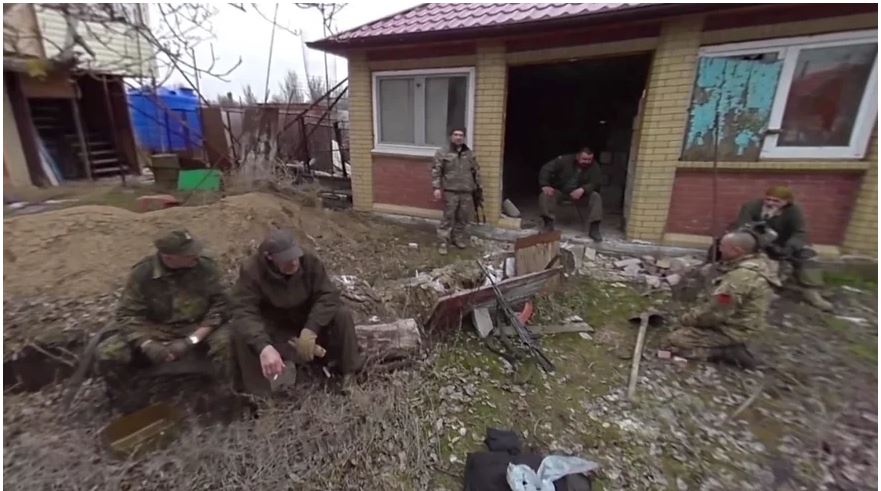
Line of Contact reprocesses the 360 video footage I made during this journey (previously used in “frontline”, 2017). When you put on the VR headset, you see soldiers around you, waiting in a damaged rural backyard. Quiet environmental sounds are audible. Behind you, you encounter my gaze while I hold the camera. The situation lasts endlessly – the footage consists of a constellation of individual micro loops – as long as you continues to watch. However, the moment you close your eyes, a war soundscape erupts, produced in a cinematic sound studio with close-range recordings of weapons used in the Russo-Ukrainian war. When you open your eyes again, the waiting returns
---
"A Space War Monument"
Dani Ploeger presents his new work "A Space War Monument", a land art performance commissioned by the Kuwait National Pavilion at the Venice Architecture Biennale on occasion of the 30th anniversary of the end of the Persian Gulf War (1990-91). At this online event, organized by Art Claims Impulse, he will share some insights on the background, context and realization of the work in the Kuwaiti desert.
Presentation:
Official Trailer:

The Gulf War has become broadly known as ‘The First Space War’ because of the prominent use of GPS-technology, ‘smart bombs’, stealth aircraft and other advanced technologies by the US military and their allies. However, philosopher Jean Baudrillard has suggested that this understanding of the war as a clean, high-tech affair has been constructed through media representations. Hardly anybody knows what really happened on the battlefield in the Kuwaiti desert, because news reports almost exclusively originated from heavily controlled and redacted press sources embedded with the US military. For this reason, he provocatively stated that ‘the Gulf War has not taken place.’
In this context, A Space War Monument connects the Gulf War’s high-tech dimension to a low-tech aspect of the conflict – the use of bulldozers as assault weapons by the US military – which have remained largely unacknowledged in official narratives. Ploeger commissioned a GPS-controlled bulldozer to erase remaining traces of the war in the Kuwaiti desert. This civilian machine brings together high- and low-tech aspects of the Gulf War, while drawing attention to the cross-contamination of military and civilian technological innovation: After the Gulf War, the bulldozer was the first construction vehicle that was equipped with GPS technology.
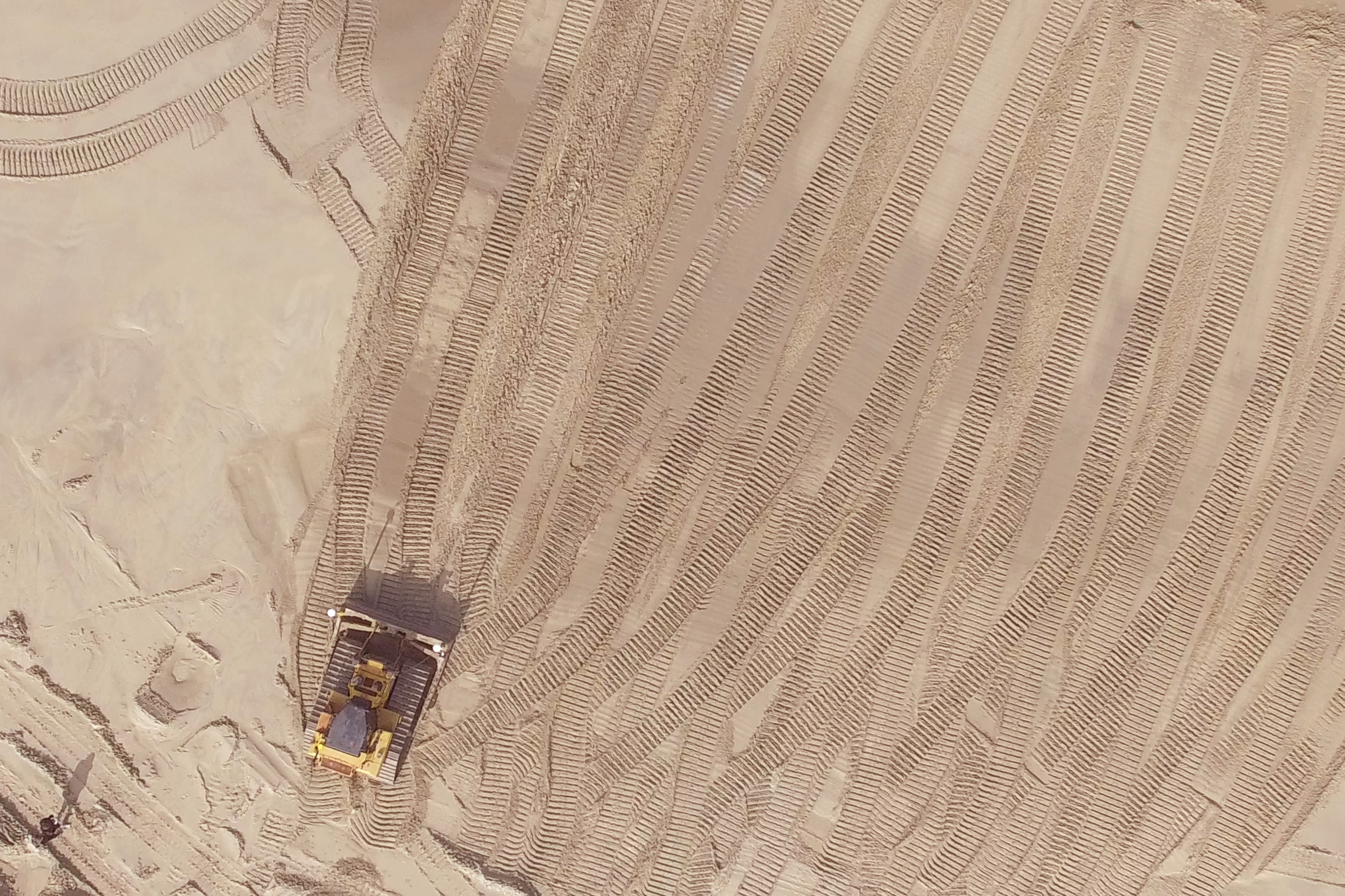
A group of soldiers appear to be waiting endlessly on a frontline position in Eastern Ukraine. When you close your eyes, a violent soundscape emerges.
By the spring of 2017, the Russo-Ukrainian war had evolved into a largely static conflict with long phases of limited combat activity. At this time, when most international media channels had lost interest in the conflict, Dani Ploeger travelled to Mariupol to accompany a group of soldiers during their daily activities on the frontline. He documented the seemingly endless waiting that often occurred at their positions.
This waiting did not constitute a state of boredom though. Rather, it felt like a lasting situation of solidified dread, a slow tension that expressed an awareness that violence could erupt any time, the imagination of combat always present inside one’s head. Indeed, five years later, this tension has been succeeded by the full scale violent cataclysm of the Russian invasion.
Line of Contact reprocesses the 360 video footage I made during this journey (previously used in “frontline”, 2017). When you put on the VR headset, you see soldiers around you, waiting in a damaged rural backyard. Quiet environmental sounds are audible. Behind you, you encounter my gaze while I hold the camera. The situation lasts endlessly – the footage consists of a constellation of individual micro loops – as long as you continues to watch. However, the moment you close your eyes, a war soundscape erupts, produced in a cinematic sound studio with close-range recordings of weapons used in the Russo-Ukrainian war. When you open your eyes again, the waiting returns
---
Our Values, 2019.
Our values, 2019, courtesy of the artist.
OUR VALUES
Razor wire, horn loudspeaker, steel, digital video, digital print on paper (140x40cm)
Commissioned by the Neue Gesellschaft für bildende Kunst Berlin.
{

Our values, 2019, courtesy of the artist.
Our values, 2019, courtesy of the artist.
Razor wire produced by the company European Security Fencing (ESF), based in Malaga in Spain, is used in many newly reinforced outer borders of the European Union, including the Hungarian-Serbian border. The euphemistic and positive-sounding corporate language used on the ESF website – which seems to have been translated with Google Translate – and the possibility to shop for razor wire ‘quickly and safely’ in the online shop stand in strong contrast with the archaic, violent nature of the product on offer.

Our values, 2019, courtesy of the artist.
In OUR VALUES, razor wire purchased from ESF is attached vertically to a metal stand with a horn loudspeaker, similar to the loudspeakers attached to the Hungarian border fence. Through the loudspeaker, the Google Translate voice monotonously speaks the corporate values that are listed on the ESF website. In August 2019, Dani Ploeger installed this object next to the Hungarian border fence, on the Serbian side of the border, outside the European Union.
>We act with professionalism, loyalty and respect for the people.
>We are committed to the job security, trying to inculcate a culture of prevention.
>Pursuing a common goal, we encourage the participation of all information sharing.
>Focusing our efforts in clients satisfaction.
>We conduct studies and promote continuous improvement to achieve the highest quality.
>We work to achieve the aims of the business project.
 Our values, 2019, courtesy of the artist.
Our values, 2019, courtesy of the artist.
Upcoming Exhibitions
Laboratory of Electronic Ageing (male grooming) (2019). Installation as part of group exhibition ‘Zero Waste’
Museum der bildenden Künste Leipzig. 25/6 – 8/11/2020
The Grass Smells So Sweet (2018). VR installation as part of group exhibition ‘Real Feelings’
Haus der elektronischen Künste Basel. 27/8 – 15/11/2020
COZY LAND (Struggle and Expand) (2018-19). Short film made with Hava Carvajal and Max Packman-Walder
Film by the Sea, Vlissingen, NL. 19/9/2020
A New Middle of Nowhere (2020). Installation and video performance as part of residency project awarded by the Mondriaan Fund (NL)
Ujazdowksi Center for Contemporary Art, Warsaw. 30/9-1/10/2020
B-hind. Intimate innovation (2020). Installation and video performance as part of ‘Manifestations’
Dutch Design Week, Eindhoven, NL, 17-25/10/2020
OUR VALUES (2019). Installation as part of group exhibition ‘Bon Voyage’
Ludwig Forum Aachen. 13/11/2020 – 11/4/2021
A Space War Monument (2020-21). Land art performance and 3D printed object for the Kuwait Pavilion
Venice Architecture Biennale. 22/5 – 21/11/2021
Biography
Dani Ploeger’s work is shown in museums, galleries and festivals, such as ZKM Karlsruhe, Ludwig Forum Aachen, transmediale, Museum of Fine Arts Leipzig, Venice Architecture Biennale, Haus der elektronischen Künste Basel, WRO Media Art Biennale, V&A Museum London and The New Institute in Rotterdam. He has received commissions from ZKM, the New Society for Fine Arts (NGbK) Berlin, V2_Lab for the unstable media in Rotterdam and the Cité Internationale des Arts Paris, among others. His VR installation The Grass Smells So Sweet (2018) was awarded the jury prize at the VRHAM Festival for art and Virtual Reality in Hamburg. His work ASSAULT (2016), encompassing an iPad shot with an assault rifle, led to a preliminary investigation for terrorist activities by the Dutch public prosecution service.
In his eclectic body of critical writing, Dani has discussed technology consumerism as reflection of a ‘symbolic order of technological progress’ (Leonardo, 2017), presented a critical history of computer operating system sounds (The Oxford Handbook of Sound and Imagination, 2019) and critiqued English Higher Education as a form of objective violence (Ice Hole Journal, 2016).
After studying music at The Royal Conservatoire of The Hague and the Orchestra Academy of the Berlin Philharmonic, Dani lived in Palestine for two years, where he worked as a music and performance teacher. Upon his return to Europe he changed career and completed a practice-based PhD in media studies and performance at the University of Sussex, UK. He is currently a Research Fellow at The Royal Central School of Speech and Drama, University of London, Fellow at V2_Lab for the unstable media in Rotterdam and Associate Research Fellow at De Montfort University in Leicester. He lives and works between London, Berlin and Flushing (NL).
CV
Dani Ploeger
Born in Middelburg, Netherlands
Studied at Royal Conservatoire of The Hague (BMus), Orchestra Academy of the Berlin Philharmonic (PG), University of Sussex, UK (PhD)
Works in London, Berlin and Flushing (NL)
Selected exhibitions/performances
solo/duo
2020
V2_Lab for the unstable media, Rotterdam, NL
2019
Zeeuws maritiem Muzeeum, Vlissingen, NL
Bruthaus Gallery, Waregem, B (with Peter Puype)
2018
Import Projects, Berlin (with Aram Bartholl)
panke.gallery, Berlin (with Yvon Chabrowski)
2017
arebyte Gallery, London
2015
Watermans Art Centre, London
ruimteCAESUUR, Middelburg, Netherlands
2014
Defibrillator Gallery, Chicago
group
2021
Kuwait Pavilion, Venice Architecture Biennale
2020
Ludwig Forum, Aachen, D
Museum der bildenden Künste, Leipzig, D
Haus der elektronischen Künste, Basel, CH
2019
ZKM Center for Art and Media, Karlsruhe, D
Het Nieuwe Instituut (The New Institute), Rotterdam, NL
WRO Media art biennale, Wroclaw, P
Kunstraum Kreuzberg/Bethanien, Berlin, D
2018
Bibliothèque Polonaise, Paris
VRHAM Festival, Hamburg, D
'Walls of Silence', Platforme Paris
2017
Odessa Biennale, Ukraine
WRO Media Art Biennale, Wroclaw, Poland
Creative Studio, Whitechapel Gallery, London
Centre for Chinese Contemporary Art, Manchester
Zona Maco art fair, Mexico City
2016
MU Art Space/Dutch Design Week, Eindhoven, NL
Celeste Prize shortlist 2016, OXO Tower Wharf, London, UK
Utopia Fair, Somerset House, London
Institute of Contemporary Art cinema, London
2015
WRO Media Art Biennale, Wroclaw, Poland
RIXC Gallery, Riga, Latvia
VARIATION Paris Media Art Fair
KEEPitREAL!, Bayt Al-Sinnari – Bibliotheca Alexandrina, Cairo, Egypt
Trancend.t, Maus Hábitos, Porto, Portugal
2014
transmediale, Berlin
London Design Festival, Victoria & Albert Museum
Interval, Künstlerforum Bonn, Germany
2012
CYNETART Festival for Computer Based Art, Dresden
Arse Elektronika – A festival of sex and technology, San Francisco
Research and teaching positions
2020- Fellow, V2_Lab for the unstable media
2019- Associate Research Fellow, De Montfort University, Leicester
2016- Research Fellow, The Royal Central School of Speech and Drama, University of London
2018-20 Artistic Researcher, Leiden University
2014-16 Senior Lecturer and Course Leader Performance Arts, The Royal Central School of Speech and Drama
2012-14 Lecturer in Theatre and Digtial Arts, Brunel University London
2011 Lecturer in Performing Arts, De Montfort University, Leicester
